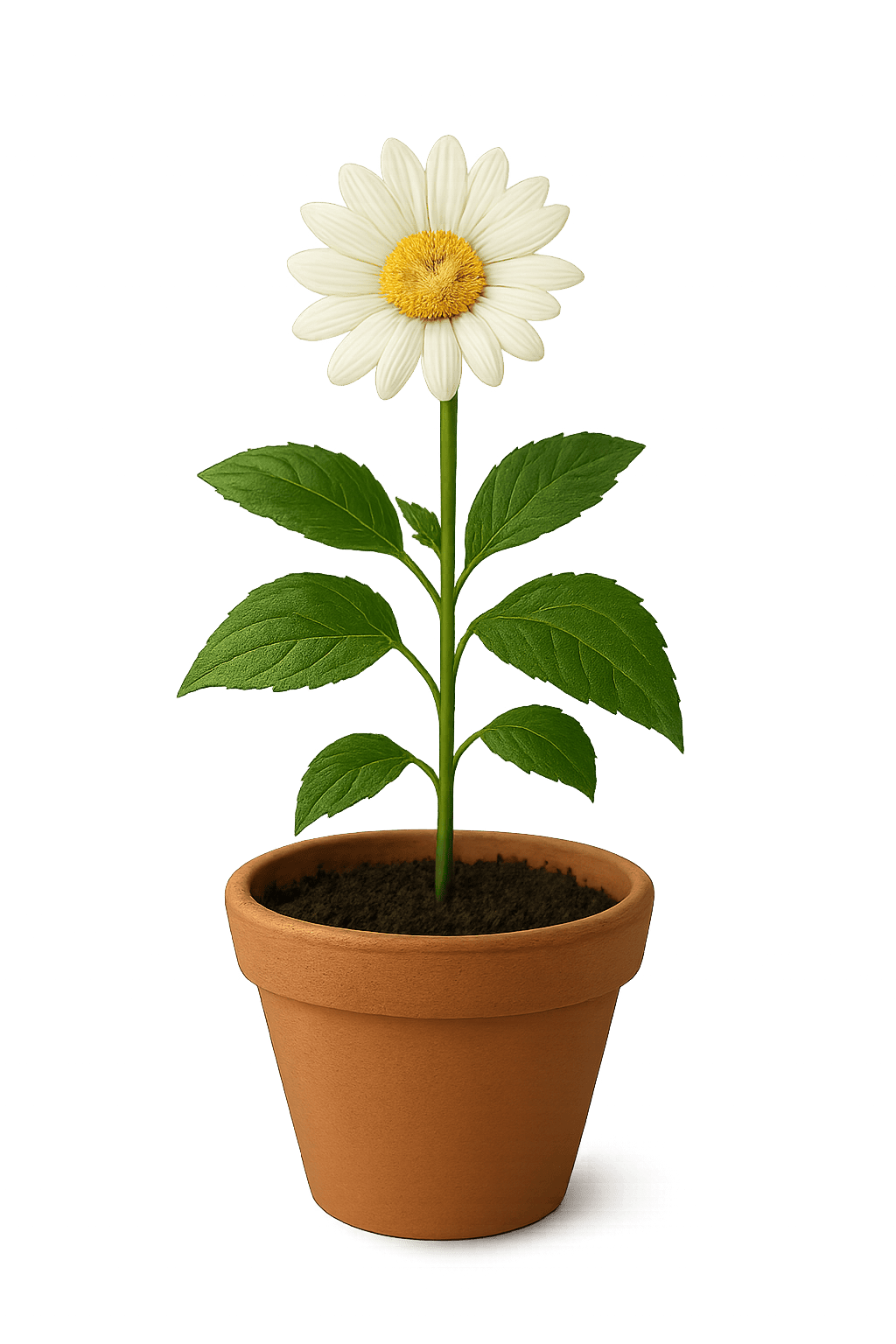Daisy
Daisy Detailed Encyclopedia Introduction
Daisy is a charming wildflower with simple white petals surrounding a bright yellow center, symbolizing innocence and purity.

Basic Info
Family:Asteraceae
Scientific Name:Bellis perennis
Origin:Europe
Flowering Period:Spring–Summer
Height:10–25 cm
Lifespan:Perennial
Morphology
Leaves:Basal rosette of spoon-shaped leaves
Flowers:White ray florets with yellow disk
Roots:Fibrous roots
Stem:Short stems with solitary flower
Growth Habits
Soil Requirements:Well-drained, moderately fertile soil
Watering Needs:Keep soil consistently moist, especially during dry periods
Light Requirements:Full sun to partial shade
Temperature Requirements:10-20°C (50-68°F)
Classification & Varieties
Main Classifications
Ornamental Varieties
Professional Care
✂️ Pruning Management
Pruning Timing:After flowering in summer
Pruning Method:Deadhead regularly, cut back foliage
Pruning Purpose:Encourage continuous blooming
Required Tools:Hand pruners, garden scissors
🛡️ Pest & Disease Management
Common Pests:
Common Diseases:
Prevention Measures:Good air circulation, avoid overhead watering
Treatment Methods:Remove affected leaves, improve drainage
🌱 Fertilization Management
Fertilizer Type:Balanced liquid fertilizer
Fertilization Frequency:Monthly during growing season
Fertilization Timing:Spring through fall
Fertilization Amount:Light application
💧 Water Requirements
Watering Frequency:Keep soil moist, reduce in winter
Watering Amount:Moderate watering
Watering Method:Water at base, avoid wetting flowers
Dehydration Signs:Wilting leaves, drooping flowers
Basic Care Tips
- •Deadhead regularly to encourage continuous blooming
- •Divide clumps every 2-3 years to maintain vigor
- •Protect from intense afternoon sun in hot climates
- •Keep soil moist, reduce watering in winter
- •Perfect for meadow gardens and cottage gardens
Ecology Value
Pollinators:Bees, butterflies, hoverflies
Wildlife:Attracts beneficial insects, ground cover
Environmental Value:Meadow gardens, cottage gardens
Cultural Symbolism
Symbolic Meaning:Innocence, purity, new beginnings
Historical Background:Ancient symbol of simplicity and beauty
Related Festivals:Spring flower festivals
Artistic Expression:Featured in pastoral art and literature